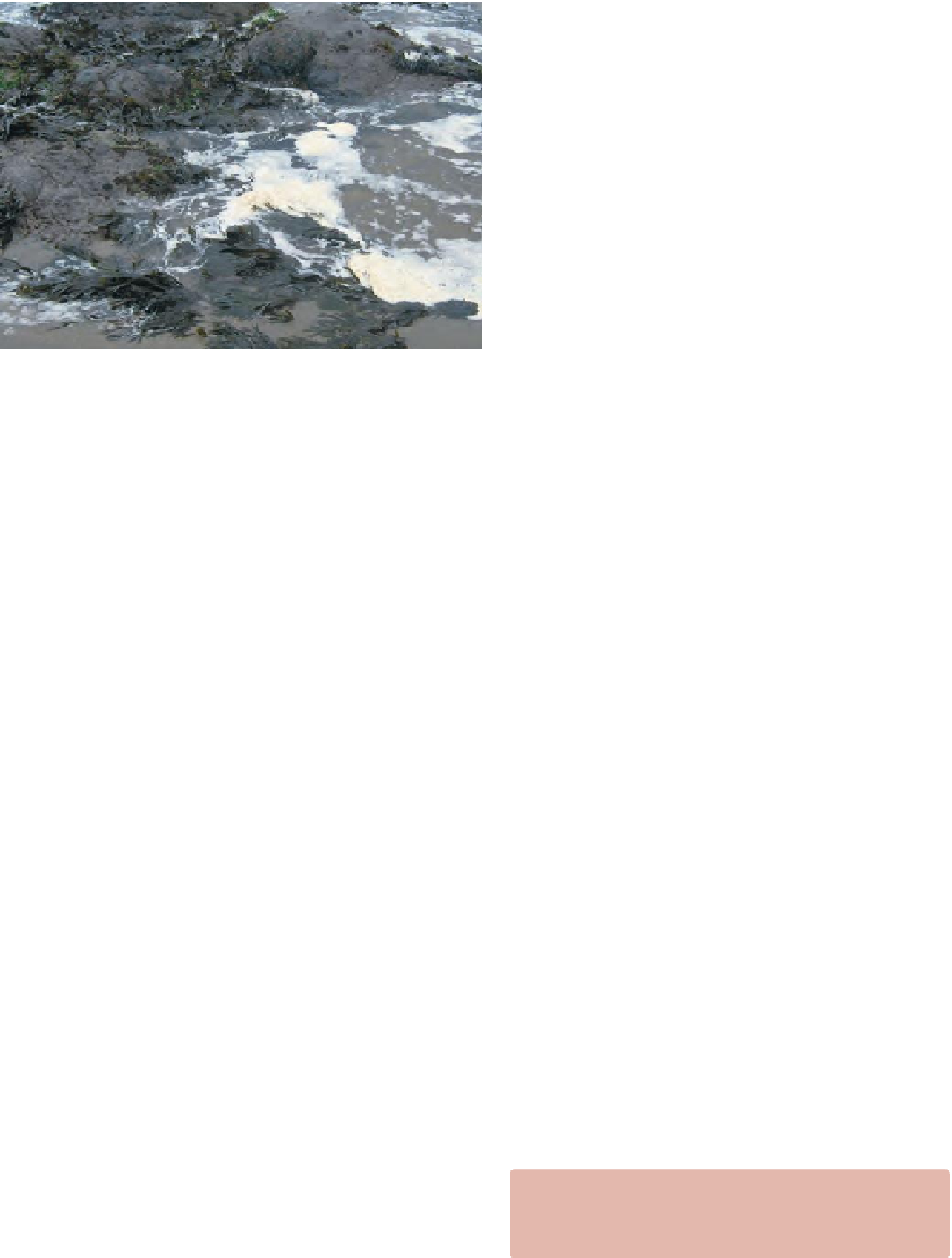Agriculture Reference
In-Depth Information
rosette plants such as daisies originally adapted to
survive being grazed by having their growing point at
ground level. In lawns the grazing animal has been
replaced by a mower, but the daisies still occupy a
particular niche in the grassland we call a lawn. An
organism's niche may also be described in time. In the
case of an annual plant, it flowers in spring and dies at
the end of the season, so occupies its niche only part
of the year.
A fundamental concept of the niche is that no two
species can occupy an identical niche. If they do,
sooner or later one will dominate and the other will die
out because of competition for resources. However
superficially it may appear that organisms occupy the
same niche, in reality they rarely do. For example,
consider a group of weeds all growing together in
the vegetable plot. Although they all grow in the
same place, they all have different requirements
and behaviours. Some, such as ephemerals, have
their main growth period very early in the year and
may produce several generations in a single season,
surviving as seed throughout the rest of the year.
Annual weeds have a single life cycle in a season and
produce seed in the autumn, while perennial weeds
overwinter, often through the use of underground
rhizomes and other perennating organs (see p. 91).
These different weed populations therefore vary
the time of year when they have greatest need of
resources and have their own food supplies when
competition is fiercest.
Other plants, which on the face of it grow together,
may mine nutrients at different depths in the soil
enabling them to survive alongside each other.
For example, lettuces with shallow roots can be
successfully intercropped with carrots which are
deeper rooting. Yet others may need full light for
growth whereas their neighbours can tolerate
shading - sweetcorn which requires good light
intercropped with shade-tolerant spinach would be an
example. As in a jigsaw puzzle where each piece has a
unique shape and only fits in one place, each species
has its own unique niche in its environment and
although many plants tolerate a range of conditions,
the nearer the gardener gets to providing the ideal
conditions for a plant's particular niche, the more likely
they are to establish a healthy plant.
Figure 3.4
Marine shoreline, an example of an open
plant community
Although gardens are not natural communities,
the same applies in that groups of plants often do
well together. A hot dry border, for example, will
successfully accommodate a range of plant species
if it reflects their original habitat. Understanding the
habitat to which a particular plant or group of plants
is adapted enables us to give it the right conditions in
a garden setting, increasing the chance of success.
Since many garden plants are introductions collected
from many very different habitats worldwide, their
origins should be taken into account (see Chapter 2).
Communities can sometimes be '
closed
'
in that they
receive only minimal contact with outside organisms
and materials. A small isolated island community in
the middle of a lake would be an example, or the
community inside the Wardian cases used by the
plant collectors (see Chapter 2), or in a conservatory.
However, most communities, are '
open
', that is,
organisms and materials can move in and out freely -
for example, wind-borne plant seeds can travel
between gardens, and birds and other animals migrate
widely across their respective ranges and 'belong' to
no single garden (Figure 3.4).
The position or role of each species within a habitat is
called its
niche
. An organism's niche includes both its
physical and its biological environment, as well as how
its needs and behaviour vary with time. For a plant,
the
physical environment
in which it grows will
reflect its requirements such as
X
light or shade
X
a particular soil pH
X
resources such as a good water supply or a high
level of a nutrient such as iron.
Its
biological environment
could include any pests,
diseases or predators which feed on it. For example,
Ecosystems
An
ecosystem
is a community of living
organsms which, together with their non-living
environment, operate as a unit.

